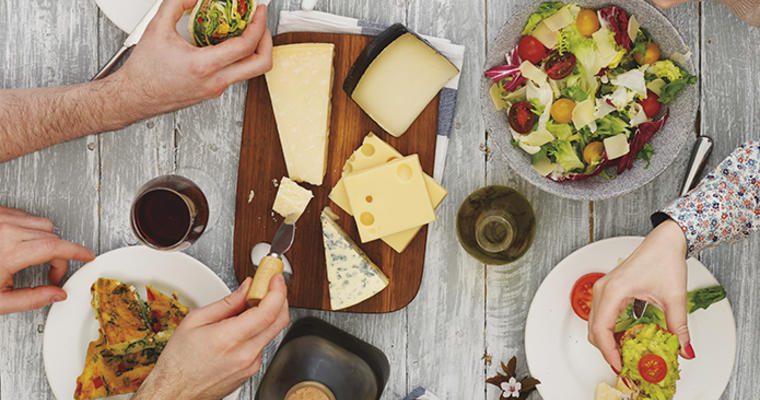A growing number of establishments are capitalizing on the all-day dining movement. Why? It comes down to profits. More and more operators are breaking away from the traditional dayparts of breakfast, lunch and dinner and are choosing to be open throughout the day to maximize revenue within their existing footprint.
There’s no one-size-fits-all plan for an all-day dining concept, but four tactics—all with a proven track record—can help you succeed
1. Create chef-driven menus
In general, the offerings we’re seeing are pretty innovative, particularly for breakfast. Chefs realize that, to build a successful breakfast daypart, they have to serve dishes that are unique for their market—which is why the best examples of new breakfast menus have a strong chef-driven bent. Johnny’s Grill, a diner in Chicago, serves a Farm-Fresh Breakfast Pie that’s similar to a quiche but updated with eggs royale (the smoked salmon version of eggs Benedict). At Little Goat Diner, also in Chicago, you can get an Italian-Asian mash-up of Breakfast Spaghetti ‘n Clams ‘n Crabs. Sound crazy? Well, let me tell you, it’s crazy delicious.
2. Cross-utilize ingredients
It takes creativity and diligence to offer the kind of all-day menus that create competitive differentiation. The key is to strike a balance so you can menu a broad selection without significantly increasing the number of items you carry in inventory. To achieve this goal, cross-utilize ingredients across all menu parts and dayparts, thereby holding down food costs and minimizing waste. Remember, consumers value dishes they can’t make at home or find elsewhere, so, the more creative you are, the more your all-day menus can build sales and satisfy customers.
Little Goat Diner uses cross-utilization to weave global flavors throughout its menu. Garlic mashed potatoes are reinvented as tempura mashed potatoes with Asian BBQ and ranch dressing that are also used for other menu items. At Dimes in New York, Halloumi cheese is used in a grilled cheese on the lunch menu, and then again as a dinner-menu small-plates item, grilled with romesco sauce, sorrel, collard greens and wild thyme. At lunch, Dimes also offers a steak sandwich with pickled Fresno pepper and harissa mayo; at dinner the same cut of steak is on the evening bar menu as an entrée accompanied by baby carrots, napa cabbage, sorrel, wheatgrass oil and herbed butter.
3. Be tops at toast
Nearly all the restaurants we visited on our street-level research tours offered a unique selection of toasts and grilled breads. The artisanal-toast trend started in the breakfast daypart and has expanded to lunch, with chefs menuing toasts as unique open-faced sandwiches. Artisanal toasts, cut into small pieces and sporting indulgent toppings, also have a place at the dinner table as sharing plates.
Jon and Vinny’s in Los Angeles brings this point home with five bruschetta, including a standout ricotta, orange-blossom honey and sesame-seed option. At Dimes, two artisanal toasts are standouts: Magic Toast with peach, goat cheese, basil and lavender; and Love Toast with housemade tahini, raspberries, mint and honey.
4: Determine what makes sense
Evaluate your operation’s capabilities and determine what works best in your market and for your customer base, as well as for your back-of-the-house and other staffing capabilities. For example, menu size can vary. Not counting à la carte items, the breakfast menu at Estrella in West Hollywood features 13 selections—six smoothies and bowls, five egg dishes and two artisanal toasts. Compare that to BEC (Bacon-Egg-Cheese) in New York, which offers a 19-item all-day breakfast menu—11 sandwiches, three salads, one soup and four sides.
The purpose of all-day dining is to offer customers access to more of your menu throughout the day, so determine whether a daypart-menu mix could work for your restaurant. Ultimately, all-day dining success comes down to getting your menu right and customizing the concept. Take the time to create distinctive offerings that creatively cross-utilize ingredients and you’ll be well on your way to pleasing consumers, building sales and improving profitability.
Eye-Opening Approaches to All-Day Menus
Here are some operations working to meet their customers preferences by applying some variation all-day dining menus:
- BEC, New York—The breakfast-focused menu is served all day.
- Dimes, New York— Breakfast and lunch are served concurrently; switches to a dinner menu in the evening.
- Jon & Vinny’s, Los Angeles—Breakfast-only in the a.m.; then moves to a combined lunch and dinner menu.
- Johnny’s Grill, Chicago—Breakfast all day; a combined lunch and dinner menu starts in the afternoon.
- Estrella, West Hollywood— Breakfast-only in the a.m.; switches to a lunch menu in the afternoon; and then modifies lunchtime sharing-plates items for its expanded dinner menu.
- Little Goat Diner, Chicago—The full menu, including breakfast, sandwiches, burgers, snacks, dinner and dessert, is available all day.




























